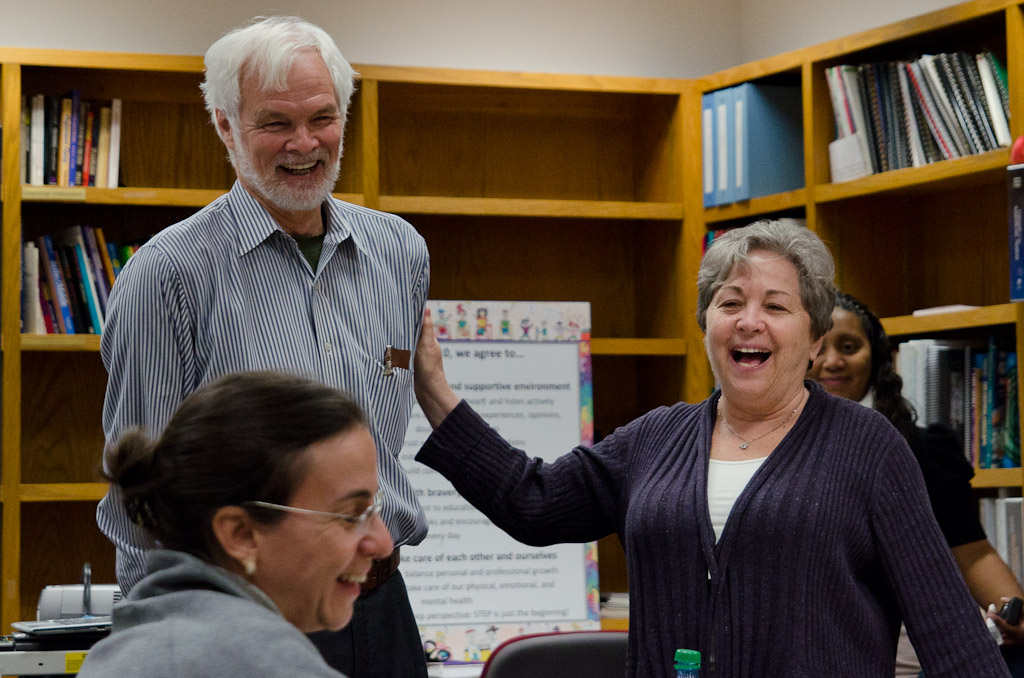
By Amy Yuen
Early this year, teams of teacher educators from Brazil, China, South Korea, and Australia convened on campus for one week to explore the underlying principles of successful teacher education developed at the Stanford Teacher Education Program (STEP). Launched in 2010, the Inquiry into the Stanford Teacher Education Program Institute—or iSTEP—gives teacher educators from universities and K-12 schools worldwide the opportunity to examine STEP from the inside-out. Participants visit STEP partner schools and meet with faculty and teacher candidates, and consider how they could use elements of STEP's approach to improve teacher education in their home countries. On the final day of this year's institute, we caught up with some of the participants for their insights and observations.
Managing Director
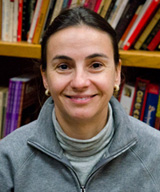
Consultant
Lemann Foundation (Sao Paulo, Brazil)
Name the top highlight of your iSTEP experience.
Ilona: It got us to think a lot about what we want to accomplish. We are here as a project team to design and propose a new curriculum for teacher education in Brazil. STEP's approach offers not only a nice baseline for the project, but it is also where we want to be years from now.
What surprised you the most?
Ilona: The level of quality and detail in the classroom every day, every minute. And the structuring of the materials and the guidelines. We don't have something like this in Brazil.
Paula: I think it's the level of commitment that people from STEP have to public education in this country. They are passionate about what they do, and that is inspirational to us.
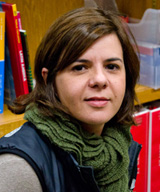
What is the biggest takeaway you'll bring back to your institution?
Ilona: Concrete examples of what to do, even though it is going to take a while for us to do it. We have a benchmark, and it is a very high one.
What do you most wish to happen for the future of iSTEP?
Ilona: To have our benchmark be recognized as a national benchmark. And to have more people become aware of iSTEP and its principles.
Paula: I think iSTEP is a great contribution that Stanford is giving to the world in terms of sharing their model and their knowledge in a generous way. I think the university should value this work a lot. Maybe we can have a cohort of iSTEPpies so we can learn from each other in the long-run—like, in five years what have we done? I know it started as a small project, but I think it can be much bigger.
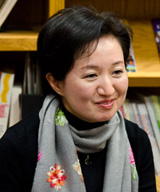
Director of Centre for Learning Study
Assistant Professor of Dept. of Curriculum and Instruction and Assistant Professor of School Partnership and Field Experience Office
The Hong Kong Institute of Education
Name the top highlight of your iSTEP experience.
The emphasis on clinical practice.
What surprised you the most?
The close linkage between theory and practice, and the structure – the students have placements in the morning and come back for coursework in the afternoon. Throughout the year, they progressively take on more responsibility in the school context so that they can really apply what they have learned in their courses to their practice. This kind of integration is amazing.
What is the biggest takeaway you'll bring back to your institution?
The integration between theory and practice and the close partnership with the schools. These are the things that my institute needs to work on.
What do you most wish for the future of iSTEP?
This program is very worthwhile and I hope it can carry on year to year. If you could invite countries and have them nominate people to attend the program who have the authority and power to carry out change, I think this would help spread the word about iSTEP to other institutions.
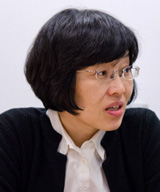
Associate Professor of Educational Policy and Administration
Korea National University of Education
Name the highlight of your iSTEP experience.
I like the clinical teaching model because our institution has weaknesses in practices and clinical work.
What surprised you the most?
The daily life of STEP students here looks tough. It's very intensive, with teaching in the morning and then extensive courses for 51 weeks. In my country, we have two semesters a year and students have summer and winter breaks, so even though they study for four years in an undergraduate program, the school hours are not as intense. I think STEP's approach is a very efficient way to study and graduate.
What is the biggest takeaway that you'll bring back to your institution?
I am in the Educational Administration department concentrating on finance and policy, so this is a learning process for me. I need to learn about teacher education because I want to suggest policies for our university, such as the clinical model. I think we can elaborate on our mentor system, and I think we need more improvement in introducing clinical work.
What do you most wish for the future of iSTEP?
I want to recommend this program to our professors, colleagues, and university administrators. Hopefully, many professors can visit here and exchange concepts, research, and practices in the future.
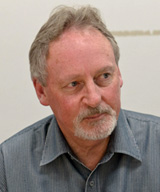
Chair of Teacher Education
Director of Learning and Teaching
Melbourne School of Education
University of Melbourne
Name the highlight of your iSTEP experience.
I think the chance to reflect on where we are, where we've been, and where we're going. The program and context here are similar but different. Visiting schools and seeing the way STEP is implemented was very useful. That's the central reason we are here, and it's always good to get away from your own context because you can get too close to it.
What surprised you the most?
Students in the U.S. don't necessarily need an undergraduate degree in the subject area they want to teach. Some things are new. For example, the disparity in funding from district to district is dependent on things like taxes. Also, the overall quality of the students. We have fairly high quality people too – you can't have quality teaching without having quality people going into it, with quality education processes at the university. The other thing that's impressive that we are trying to do too is making the links between schools and the university much closer. Not everybody does that well. I think STEP does that well. I think we do it well too, but we have a ways to go.
What is the biggest takeaway that you'll bring back to your institution?
That we are on the right track.
What do you wish most for the future of iSTEP?
I hope it's successful and continues to improve. Ultimately what we are trying to do is make things happen in schools for kids. We're trying to close achievement gaps. We're trying to make education the means for happier, healthier lives. Education is about changing lives.
Teacher educators from the United States and abroad are invited to apply for the next iSTEP, scheduled to take place in February 2012. To learn more, contact STEP Director Rachel Lotan at rlotan@stanford.edu.
Subscribe to our monthly newsletter.